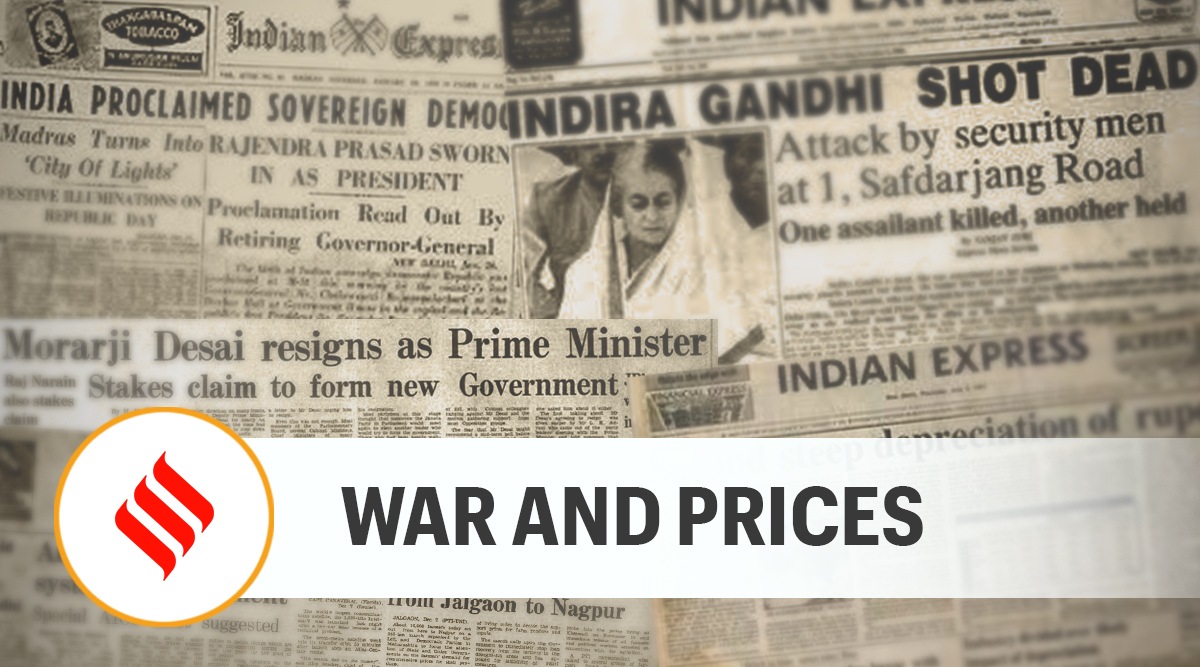 The outlook for the ensuing kharif cropping season seems equally promising. If current prices hold, or don’t significantly fall, farmers will have the incentive to plant more area under cotton, maize, soyabean, groundnut, sesamum and sunflower.
The outlook for the ensuing kharif cropping season seems equally promising. If current prices hold, or don’t significantly fall, farmers will have the incentive to plant more area under cotton, maize, soyabean, groundnut, sesamum and sunflower. Indian farmers may well be collateral beneficiaries of the disastrous Russian invasion of Ukraine. Soaring international prices of agri-commodities, thanks to shipping disruptions in the Black Sea, have improved crop realisation prospects even as a bumper rabi harvest of wheat, mustard, maize and barley is in the offing. The outlook for the ensuing kharif cropping season seems equally promising. If current prices hold, or don’t significantly fall, farmers will have the incentive to plant more area under cotton, maize, soyabean, groundnut, sesamum and sunflower. That would help promote crop diversification, especially weaning farmers away from paddy and sugarcane.
There is, however, one elephant in the room: Fertilisers. India is an importer of plant nutrients, whether in finished form or as raw material and intermediates. Urea and di-ammonium phosphate (DAP) are currently trading at $1,200 and $1,300 per tonne, respectively, as against their corresponding year-ago levels of $400 and $500. The landed price of muriate of potash (MOP) imported into India has, likewise, surged from $247 to $592 per tonne; so have those of inputs such as phosphoric acid (from $795 to $1,530), sulphur ($225 to $450) and ammonia ($475 to $1,150). The reason is simple: Russia is the world’s largest urea exporter and, together with its strategic ally Belarus, accounts for around 40 per cent of the global trade in MOP. Russia also figures among the top five DAP-exporting countries. With a crucial supply source getting cut off by a combination of war-linked suspension of cargo movements and financial sanctions, the entire international fertiliser trade has been thrown into jeopardy.
What can India do? Three things, probably. The first is to rely less on floating import tenders, which will only further drive up global prices in a seller’s market. A better option is to contract directly – with Canada, Israel and Jordan for potash and Saudi Arabia, Morocco, Senegal, Tunisia, Togo and Egypt for phosphates — using government channels. Similar sourcing of, say, 1.5-2 million tonnes each of urea and DAP is possible even with China. With kharif sowings starting from mid-June, there is a reasonable time window to tie up supplies. The second is to initiate a campaign, well ahead of the season, to induce farmers to reduce consumption of urea, DAP and MOP and replace these with complex fertilisers having less, but more balanced, nutrient content. Third, the maximum retail price of urea has been unchanged since November 2012. A minimum 25 per cent hike is in order now — to prepare farmers for eventual price decontrol and a flat per-acre subsidy regime.
This editorial first appeared in the print edition on March 23, 2022 under the title ‘War and prices’.
- The Indian Express website has been rated GREEN for its credibility and trustworthiness by Newsguard, a global service that rates news sources for their journalistic standards.

